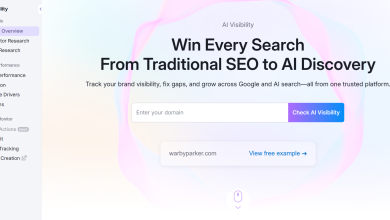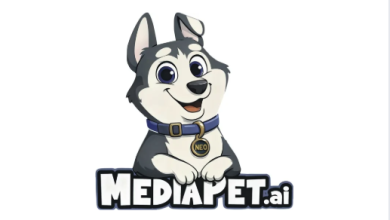The Merging of Platforms and Technology Will Create a World Where Ads Transcend Digital, Virtual and Physical Space
So you’re driving down the highway en route to a couple’s weekend in … Vegas? Yeah, let’s go with Las Vegas. You’ve never been there before; not really your speed, you’ve always thought. You’re more of an off-road biking nut than a blackjack aficionado. You’d rather race than gamble.
It’s the year 2032.
Suddenly, there in the distance, you see it. It’s a holographic billboard for the hottest new attraction in Vegas since all-you-can-eat buffets: an off-road biking package tour of the desert around Las Vegas, with scheduled stops at all the trendiest casinos. It includes a meet-and-greet with three of the top cyclists. (Your wife, meanwhile, is focused on the electronic billboard on her side of the highway, which touts the book club at the Hard Rock Hotel; their selection for this month happens to be a novel from her favorite author.)
It’s all right up your alley. It’s like they read your mind and your wife’s, too. It’s as if Philip K. Dick was alive and well, working as a marketing consultant in Sin City.
Is this Minority Report-esque scenario the future of out-of-home (OOH) advertising? Or will the latest advances in data collection and individualization result in an OOH paradigm that is less intrusive—but equally helpful to both the consumer and the marketer?
The fundamental underpinning of such a scenario is the massive cloud of Big Data that already exists and will only get more massive in the years to come. If you are online at all in today’s world, chances are that Google, Facebook, Amazon, and other companies already know more about you than do your friends and family.
“I picture a future where—just like Amazon, Google, Facebook, Instagram, etc. all know all about you through your digital activities—you have some kind of geolocation signature so that you can also receive customized ads in the real world,” says Glenn Hopper, an expert on artificial intelligence and the author of Deep Finance.
Say that you search online for some new running shoes, but you don’t buy them. In Hopper’s scenario, the search is stored in your data and then, if you are walking near a running store, you get an ad about the shoes for which you had searched. Or, if you bought shoes in that store before, the “system” knows when you bought them and can target an ad when you need a new pair.
Is this creepy? Or is it incredibly helpful? Or is it both at the same time?
OOH advertising is almost as old as humanity itself. The Egyptians used obelisks to let the masses know about new laws and treaties with foreign nations. The practice really took off with the introduction of movable type, which made it possible to mass-produce handbills. As printing was perfected and more of the population became able to read, advertising posters became more common (especially after the invention of lithography in the late 1700s). Large-format advertising like the billboards of today was introduced in the U.S. in the mid-1800s, eventually leading to the common sight of an endless advertisements on urban roads and rural highways. Digital billboards—hinting at the future possibilities imagined in Minority Report—were first launched in the early 2000s and have quickly become ubiquitous on roads and highways across the world.
So, is it possible to present modern OOH advertising in a way that fulfills the legitimate marketing and personalization needs of today’s companies and customers, while remaining sensitive to the privacy and other concerns that can arise from overly intrusive advertisements?
Sam Mallikarjunan thinks so. The co-founder and CEO of OneScreen.AI, a marketplace provider for buying and selling OOH ads, believes that gentle individualization of OOH advertisements actually offers a tonic for consumers who are digitally fatigued from the modern deluge of personal screen time. Simply put, OOH is a great opportunity to rise above the noise.
“Unlike ads on the Internet, OOH advertising can be just as impactful and just as targeted using contextual data even if it has zero data on an individual consumer,” says Mallikarjunan. “But it turns out that consumers trust OOH more than other channels because it feels less personally intrusive. In our recent consumer report, The Post-Pandemic Marketing Renaissance, 77% of respondents said they are comfortable with individual targeting in OOH and 85% said they are comfortable with aggregate targeting in OOH.”
Mallikarjunan believes that the power to opt-in—or out—of data targeting will be key to smoothing the road to more powerful forms of individualized OOH advertising.
“I think the primary advances will come in terms of data privacy controls,” he says. “Unless brands and technology companies are willing to hand the keys to private data over to the people who own it, social and political pressures will result in a regulatory environment that just destroys that entire unit of currency. That would be a tragedy.
“As a consumer, I actually don’t mind ads that help me discover something that I really am interested in. But I want to be able to control who uses that data, how they use it, and whom it benefits.”
Interest in the reach and power of OOH advertising has increased in recent years, as companies see diminishing returns from their digital buys. According to a survey of more than 600 marketing professionals from Kickstand Communications, 67% of respondents claimed that, as they scaled up their investment in digital marketing, their returns clearly decreased. 77% said that the pandemic and its resulting pressure to increase focus on online advertisement made SEO pressures even more acute. 92% of respondents reported that they are increasing their OOH buys in 2022.
As OOH reclaims its rightful place in the advertising landscape, the next frontier is clearly digital. Ideally, technological advances will enable OOH to utilize the same techniques that has made online marketing so efficient, but with a diminished fatigue factor.
“I must be old because when I first started producing OOH creative, my art director was physically laying out print ads,” says Gerald Mortensen of G. Morty & the Makers, a Wisconsin-based marketing agency. “Today, the majority of OOH is obviously flowing toward the digital landscape. From digital billboards to flashing displays in the grocery store, the presence remains strong, but it’s much heavier on the digital side now. I’ve even seen a few old telephone booths transformed into digital displays in Europe and Asia, which I personally think is pretty cool.”
Most of us have seen the digital ads that are starting to dominate the OOH space. Soon, those ads will start to utilize individualization techniques like geolocation to create a more personalized experience. While the positives of this development are obvious, so are the potential negatives when it comes to privacy concerns. Are we truly headed for a Minority Report-esque future? Or is it in the OOH industry’s best interest to manage this new world in a manner that respects the privacy of customers?
Hopper thinks it’s likely that OOH companies will work proactively to head off the possibility of new government regulation.
“I think the sci-fi portrayals of digital billboards incessantly popping up as people move through life are a little overdone,” Hopper says. “I don’t think anyone’s going to sign up for that experience in the real world, and if it was forced upon them, I could see the FTC stepping up the fight against it.
“I think a lot of the potential tracking for OOH advertisers will be geolocation specific and will target certain groups vs. specific individuals. Smart advertisers will take a more measured approach that lets consumers opt-in at some level to participate or not. Just as with online ads, there are advantages to having personalized content vs. broadcast messages that reach all demographics regardless of the intended target. If, for example, a store or restaurant you frequent is having a sale or daily special, I could see a consumer wanting to receive that information when he or she was nearby.”
OneScreen.AI’s Mallikarjunan agrees that the comparison to social media networks like Facebook and Twitter is misplaced, given the focus on aggregated data over individual consumers and the fact that consumers don’t “own” a piece of the OOH landscape like they do their own social media accounts.
“In situations where the OOH industry is beginning to adopt consumer data analytics, the math is inherently privacy-centric because OOH (by definition) focuses on audiences rather than individuals,” he says. “While Google and Facebook etc. are all struggling to figure out the math behind how to not target individuals, OOH companies use audience cohorts by default and therefore don’t have the same struggles that internet-based companies do when it comes to trying to not target individuals.
“Since OOH is not a medium that is owned by an individual consumer, the idea that data can be used to make it more intelligent isn’t as ‘creepy’ as it is when someone hyper-targets my phone, laptop, or CTV in a way that’s obviously using my consumer data without my consent. The OOH industry has historically not used much, if any, of the data that internet networks such as search engines or social media have used. The OOH industry is just beginning to adopt the use of real data or analytics. So it’s definitely in the best interest of the OOH industry to build from the ground up as a channel where consumers and governments feel that privacy is being respected.”
While the most intrusive forms of personalized OOH advertising may not be on the horizon, we should still expect the unexpected. Tomorrow’s OOH is sure to be more immersive than today’s.
“We will see OOH take new forms as our worlds continue to merge,” says Aaron Vick, a Web3 consultant with a background in cross-functional operational strategy. “Digital worlds are appearing in our real lives through advancements in augmented reality (AR), and we are beginning to further immerse ourselves into metaworlds through virtual reality (VR). New forms of OOH will go beyond the traditional physical objects with which we are familiar, by creating alternative ways to present creative brand awareness and even offer interactive experiences.”
“The future is a much bigger space than where we are now,” Vick says. “The key for forward-thinking brands is to establish community outreach through direct experiences, in order to ensure that potential customers feel like they have a sense of ‘belonging’ to the communities that use those products and services.”




